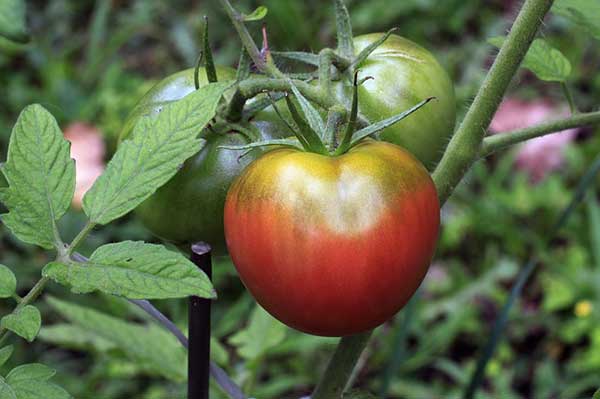Whether just starting or a seasoned gardener, feeling overwhelmed at the beginning of each growing season is relatively common. There’s so much to do! From planning our garden beds and starting our seeds to eventually transplanting them into the ground, there’s a lot to consider.
Many people choose to buy seedlings from a local greenhouse to eliminate any hassle, and that’s all good and fine! Whatever floats your boat. But there are a few advantages to starting from seed, namely the low cost, the variety available, and of course, knowing how your babies are grown right from the get-go.
Growing from seed doesn’t have to be challenging. Many food crops are incredibly easy to start and deliver high rewards. So get your seed trays ready and let the good times roll with these five easy foods to grow from seed.
Squash

Both winter and summer squash, zucchini, in particular, are the kind of crop that make any gardener, amateur or expert, feel like a bonafide superstar. The first year I had a veggie patch I made the mistake of planting four zucchini plants. That’s right, four. I had squash coming out of my ears that year and incorporated the delicious vegetable into many recipes. Better yet, they’re super easy to start. Plant squash seeds indoors 4-5 weeks before the last frost. Watch them germinate in 5-10 days, and enjoy the fruits of your “labor” all summer long. The only real effort you might need to put into zucchini is keeping their roots undisturbed at transplant time, and hand pollination.
Peppers

The pepper family, whether sweet or spicy, have a reputation for being temperamental babies. But treat them right, and they’ll do good by you too. For example, in my entry year to the world of vegetable gardening, I didn’t use heat mats. Big mistake! I had all but given up on my seeds when a month later, they finally sprouted. The late start meant I didn’t get to enjoy the peppers until very late in the season. Peppers need warm soil to germinate! Now I put my seeds in a sterile potting mix, place the tray on a heat mat, and pop the dome on top of the tray. Voila! All of my pepper seeds germinate in less than a week. Start them 8 weeks before the last frost, feed seedlings bi-weekly with a 5-5-5 or a 5-5-10, and you’re in business. The plants transplant very well, and you’ll be enjoying the fresh flavor all summer long.
Tomatoes

My gosh, the tomato section of any seed catalog is exciting! There are so many gorgeous varieties available in a rainbow of colors, each kind bursting with that fresh, summertime flavor. Many seasoned gardeners devote a good amount of their time to tomato plants, and that’s mainly because they’re so damn rewarding. They do require a little bit more work in the way that their growing conditions must be just right. Once again, invest in a heat mat and start your seeds 6-8 weeks before that last frost. Place a dome on top of the tray, and the seeds will likely germinate in about 7 days. Remove the dome and give them plenty of light. Grow lights are always a good idea at this point. Tomatoes are heavy feeders, so provide them with plenty of nutrition, sun, and stakes, and you’ll be excitedly running outside to harvest these beauties several days a week.
Beets

The roots on a beet plant form very quickly; so quickly, that it’s recommended you either sow seeds directly into the garden after the last frost or indoors only a few weeks before you plan to transplant them outside. Beet seeds do like warm soil, but germination can happen in temperatures as cool as 45°F (7°C). They can go into the ground two weeks before the last frost. Every part of the beet is edible, so gardeners who plant it get a lot in return.
Cucumbers

Who doesn’t love fresh cucumbers? Slice them up and eat them raw in salads, with hummus or alone, and even add them to a refreshing drink. If you have kids, this crop is a must; it’s so easy to convince them to eat a cucumber! They produce an abundance of fruit all season long. The seeds are a cinch to start; get going 3-4 weeks before the last frost and keep the soil warm with a heat mat. Watch them germinate in 3-10 days. That’s fast! Last summer, my daughter kicked a soccer ball into the cucumber patch, and in a moment that seemed to move in slow motion, I watched our dog give chase and trample all of my precious seedlings. I restarted the seeds by directly sowing into the garden and still enjoyed the crop all summer long. Don’t forget to grow up! Cucumbers are climbers, and by adding a trellis, you’ll save serious space in the garden.
EDITOR’S NOTE:
Whether experienced or novice, the following books are excellent resources for those who take growing food and flowers seriously. They’re excellent sources of information for the above crops and much more. Give them a read:
Starting & Saving Seeds: Grow The Perfect Vegetables, Fruits, Herbs, and Flowers For your Garden, by Julie Thompson-Adolf
Mastering the Art of Vegetable Gardening, by Matt Mattus